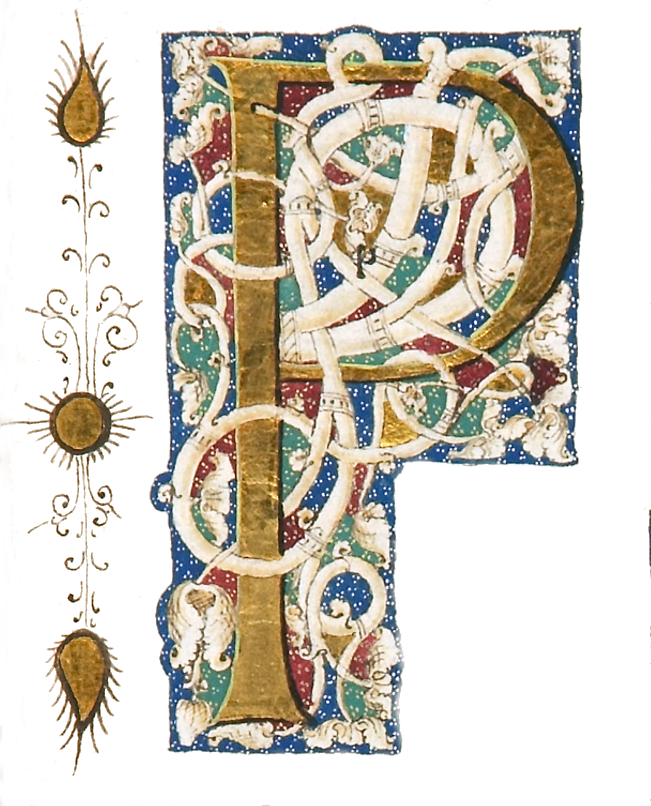first edition
1888 · [New York]
by (BINDINGS - SANFORD). (PLANTIN, CHRISTOPHER). (EXTRA-ILLUSTRATED). DE VINNE, THEODORE L.
[New York]: Grolier Club, 1888. FIRST EDITION. ONE OF 300 COPIES on paper (and three on vellum). 260 x 185 mm. (10 1/4 x 7 1/4"). 98 pp.
ELEGANT DARK BROWN CRUSHED MOROCCO, GILT IN A GROLIERESQUE DESIGN, BY P. B. SANFORD (stamp-signed on front turn-in), covers with intricately interlacing strapwork forming compartments accented with gilt stippling and leafy fronds, raised bands, compartments with leafy sprig centerpiece, gilt lettering, pastedowns framed with decorative rolls and floral garlands, leather hinges, maroon marbled endpapers, top edge gilt. With 20 plates original to the text and 40 EXTRA ILLUSTRATIONS ON 28 PLATES, comprised of 21 portraits, five printer's devices cut from Plantin books, 12 decorative initials from Plantin books, an engraved title page from 1606 and the Plantin coat of arms. Grolier Club "Lists of publications, 1884-1905," VIII. A touch of rubbing to extremities, occasional light offsetting from added illustrations, but A FINE COPY with almost no signs of use.
Produced for a subscribing member of the Grolier Club, our copy of this history of the Plantin Press is extra-illustrated with Plantin-related material, and comes in an appropriately Grolieresque binding. Our author, Theodore Low De Vinne (1828-1914), was one of the most eminent American printers of his day, as well as a printing historian and a co-founder of the Grolier Club. The American Printing History Association sums up his impact by saying "his encyclopedic understanding of the craft, his advancement of its technology and design, his appreciation of its history, his business leadership, and his many writings earned him, among his contemporaries, the designation 'Dean of American Printers.'" Part history, part travelogue, the present work tells the story of the famed Plantin Press and the Plantin-Moretus Museum, which opened the year before this publication. Christopher Plantin (1520-89) initially set up shop in Antwerp as a bookbinder in 1549, but turned to printing in 1555. He soon rose to the top of his trade, both as a printer and type designer. The press stayed in the family (descending through Plantin's son-in-law, Jan Moretus) for the next three centuries--and, unlike many other presses, retained the types and equipment of its founder. In 1876, Edward Moretus sold the press to the city of Antwerp, and the following year it opened as a public museum, which has operated ever since. According to the Boston City Directory of 1917, P. B. Sanford's firm occupied premises at 78 Bedford at that time. While in Boston, Sanford taught binder Mary Sears Crease; later in his career he worked for the Carnegie Library in Philadelphia. As seen here, Sanford's bindings are refined and well executed, and the present example is distinguished by its very fine condition.. (Inventory #: ST20206)
ELEGANT DARK BROWN CRUSHED MOROCCO, GILT IN A GROLIERESQUE DESIGN, BY P. B. SANFORD (stamp-signed on front turn-in), covers with intricately interlacing strapwork forming compartments accented with gilt stippling and leafy fronds, raised bands, compartments with leafy sprig centerpiece, gilt lettering, pastedowns framed with decorative rolls and floral garlands, leather hinges, maroon marbled endpapers, top edge gilt. With 20 plates original to the text and 40 EXTRA ILLUSTRATIONS ON 28 PLATES, comprised of 21 portraits, five printer's devices cut from Plantin books, 12 decorative initials from Plantin books, an engraved title page from 1606 and the Plantin coat of arms. Grolier Club "Lists of publications, 1884-1905," VIII. A touch of rubbing to extremities, occasional light offsetting from added illustrations, but A FINE COPY with almost no signs of use.
Produced for a subscribing member of the Grolier Club, our copy of this history of the Plantin Press is extra-illustrated with Plantin-related material, and comes in an appropriately Grolieresque binding. Our author, Theodore Low De Vinne (1828-1914), was one of the most eminent American printers of his day, as well as a printing historian and a co-founder of the Grolier Club. The American Printing History Association sums up his impact by saying "his encyclopedic understanding of the craft, his advancement of its technology and design, his appreciation of its history, his business leadership, and his many writings earned him, among his contemporaries, the designation 'Dean of American Printers.'" Part history, part travelogue, the present work tells the story of the famed Plantin Press and the Plantin-Moretus Museum, which opened the year before this publication. Christopher Plantin (1520-89) initially set up shop in Antwerp as a bookbinder in 1549, but turned to printing in 1555. He soon rose to the top of his trade, both as a printer and type designer. The press stayed in the family (descending through Plantin's son-in-law, Jan Moretus) for the next three centuries--and, unlike many other presses, retained the types and equipment of its founder. In 1876, Edward Moretus sold the press to the city of Antwerp, and the following year it opened as a public museum, which has operated ever since. According to the Boston City Directory of 1917, P. B. Sanford's firm occupied premises at 78 Bedford at that time. While in Boston, Sanford taught binder Mary Sears Crease; later in his career he worked for the Carnegie Library in Philadelphia. As seen here, Sanford's bindings are refined and well executed, and the present example is distinguished by its very fine condition.. (Inventory #: ST20206)













![BIBLIOTHECA PHILLIPPICA. [with] MUNBY, A. N. L. PHILLIPPS STUDIES](https://d3525k1ryd2155.cloudfront.net/h/228/806/1678806228.0.m.jpg)